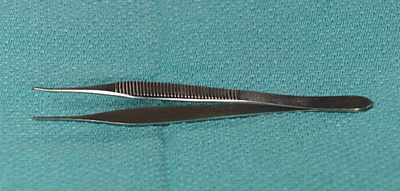Current and Future Technology of Forensic Anthropology
Technologies in Forensic Anthropology
-Chemicals:
- help forensic anthropologist do their job better and more effectively by helping gather and study evidence
 illumination of body fluids
illumination of body fluids- certain chemicals which define chemical components of evidence
- cleanse things (make them clean)

-Microscopic technologies
- help define the minutest (smallest) details
- example: dust, plant, other matter
- specific time (help identify)
- Dual beam Microscopy
- provide high resolution and analysis in three dimensions
-Voice Stress Analysis vs. Polygraph
- Voice Stress Analysis- microphone attached to computer or digital recorder
- Polygraph- interment that is used to measure heart rate, blood pressure, and respiration.

-Facial recognition and fingerprint identification

- fingerprint identification is more accurate than facial
- (facial) since photography government agencies and private organizations
- (facial) similar to line-up techniques (group physically similar)
- (facial) "portrait parle" or spoken portrait (portraits could be sorted by common morphological characteristic or people who were repeatedly arrested)
-S.E.M (computer automation and detector technology that allows for rapid elemental analyses of small particles)
- Speed, accuracy, and consistency keys for moving forensic caseloads from lab to courtroom
- includes analysis of glass, paint, fiber, GSR (Gun shot residue) newest generation-----> utilizing energy dispersive x-ray spectrometers
- incoperates computer automation that allows for rapid automated elemental analyses of small particles or inclusions
-Triage tool
- "pulling the plug" to maintain "gold standard" (integrity of a hard drive) drive encryption
- vary in technical and operational performance capabilites
- quick access to a computers relevance to an investigation prior to removing its power and seizure

-Drawing
- important still get image of person/persons to put out an APB.
- Dark room: for getting photographs
-Toxicology
- more sensitive way to measure the amount of cyanide and carbon monoxide in blood
- (common traditional methods for measuring carbon monoxide rely on the use of spectroscopic techniques) -----> entail diluting a blood sample and shinning a light through it in a series of wavelenghts
- if body begins to decompose, the resultant bacteria, or putrefaction, can interfere with wavelenght
Tools used in a Crime Scene-Video
Create your own video slideshow at animoto.com.
| Crime Scene tools: | Uses of Crime tools: |
crime scene tape  | secure the scene |
camera and film | photograph scene |
| sketch pad and pen | scene and people sketch |
| disposable protective clothing | protect from anything harmful |
| flashlight | light up a scene |
| Alternative light (ex. laser, ultraviolet, infrared light) | exposing certain types of evidence |
| Magnifying glass | for finding trace evidence |
| Tweezers and cotton swabs | for collecting hair, fiber, and fluid evidence |
| paper & plastic evidence bags & glass tubes | collect and transport evidence |
finger print supplies (ink, print card, lifting tape, ect.) | taking fingerprints |
casting kit | making casts of tires, footwear, and tool-mark impressions |
| Serology kit | for collecting blood and other body fluids |
| Entomology kit | collecting and preserving insect evidence |
Hazmat kit  | for handling hazardous material |
| Sexual assult kit | collecting evidence in rape or assult cases |
Tools used during in Autopsy
Create your own video slideshow at animoto.com.
| Autopsy tools: | Uses: |
Bone saw  | Used to cut through bones or skull |
Bread Knife  | used to shave off slices of organs for examination |
Enterotome  | special scissors used to open the intestines |
Hagedorn Needle  | a heavy needle, used to sew up the body after examination |
Hammer with hook  | used to pull of the skull cap off the skull |
Rib cutter  | special shears used to cut through ribs |
Scapel  | like a surgeon's scapel (but much larger) for making long deep cuts for scraping away tissue |
| Scissors | used for opening hollow organs and cutting vessels |
Skull chisel | used for helping to carefully pry skull cap off |
Stryker Saw  | the electric saw used to cut through the skull to remove the brain |
Toothed forceps  | used to pick up heavy organs |

-Spreading Calipers
- metal, scissor like tool
-Osteometric boards
- wooden boards marked with measurements and equipped with slidding ruler

Sources
Check out my video on "How to preform an Autopsy".